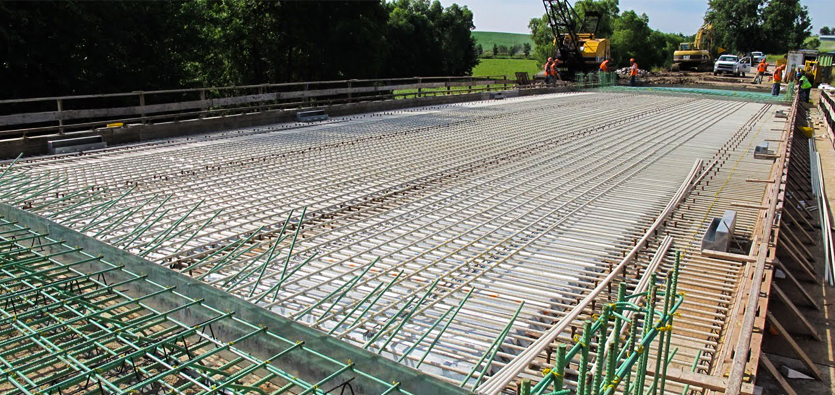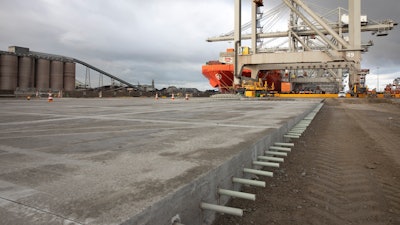Advanced Composites for Sturdy and Light-weight Construction
Advanced Composites for Sturdy and Light-weight Construction
Blog Article
Unlocking the Environmental Advantages of Recycled Compounds in Construction and Style
In the realm of construction and style, the use of recycled compounds holds substantial promise for enhancing sustainability practices and minimizing ecological effect. The change in the direction of an extra lasting future in these sectors pivots on opening the full potential of recycled compounds.

Environmental Impact Decrease
The reduction of ecological impact via using recycled compounds in building and layout plays an important duty in lasting methods. By integrating recycled compounds right into structure products, the building market can substantially lower its carbon impact and add to a much more eco-friendly future. These lasting materials, made from repurposed plastics, timber fibers, or other recycled components, supply a viable option to typical building products without jeopardizing on top quality or sturdiness.
Recycled compounds aid divert waste from garbage dumps and lower the need for drawing out resources, therefore conserving all-natural resources. Additionally, the production procedure of these composites typically consumes less power and emits less greenhouse gases contrasted to creating virgin products (composites). This change in the direction of utilizing recycled compounds not only reduces ecological harm but also advertises a circular economic climate by urging the reuse of materials that would certainly otherwise be discarded
Waste Reduction
With an emphasis on minimizing waste in building and construction and layout, the integration of recycled composites supplies a lasting remedy to minimize ecological effect. Waste minimization is an essential aspect of lasting practices, and using recycled composites offers an opportunity to achieve this goal efficiently. By making use of products that have currently served their first function, such as recycled plastics or recovered timber fibers, the construction and design markets can significantly lower the quantity of waste generated and sent out to garbage dumps.
Recycled composites have the possible to divert substantial amounts of waste from standard disposal techniques, adding to a more round economy where sources are utilized efficiently. Additionally, the production procedure of recycled composites frequently consumes much less power and generates fewer emissions compared to virgin materials, additionally minimizing the ecological impact of building and construction and layout projects.
Implementing waste reduction approaches with the unification of recycled composites not just aids in saving natural deposits but likewise advertises a much more sustainable technique to structure and creating for a greener future.
Energy Preservation
Including recycled composites not just reduces waste in building and construction and design but also plays an essential duty in enhancing power conservation methods within the market. Using recycled composites in building and construction can significantly add to power preservation via various ways. The manufacturing of virgin products usually requires substantial power inputs, whereas making use of recycled composites eats less power, thereby minimizing total energy intake. In addition, including recycled compounds can add to much better insulation residential properties in structures, lowering the requirement for too much home heating or cooling, and as a result decreasing power use for climate control. Moreover, the light-weight nature of lots of recycled compounds can lead to lighter structures, requiring much less energy for transport and installation. By advertising using recycled compounds in building and construction and style, the industry can make considerable strides in the direction of accomplishing energy effectiveness and lowering its carbon footprint, ultimately contributing to an extra lasting developed setting.
Carbon Impact Decrease
Enhancing sustainability techniques with the use of recycled composites in building and layout substantially lowers the carbon impact of the market. By integrating recycled materials into the manufacturing of compounds, the requirement for virgin sources decreases, resulting in reduced energy usage and greenhouse gas discharges connected with conventional manufacturing procedures. This decrease in carbon impact is essential in combating climate modification and advertising a much more ecologically pleasant technique to building and style.
Furthermore, the use of recycled compounds also helps in diverting waste from garbage dumps, thus mitigating the environmental influence of disposal and promoting a circular economic climate. The carbon footprint decrease accomplished via the fostering of recycled composites lines up with the global push towards lasting practices and the reduction of industrial discharges. It showcases a commitment to liable source administration and a shift in the direction of greener alternatives in the building and construction and layout sectors. Inevitably, by prioritizing the combination of recycled composites, the industry can make significant strides in lowering its carbon footprint and adding to a more sustainable future.
Sustainable Future
The integration of recycled composites in construction and layout not only addresses immediate ecological issues but likewise lays a solid foundation for a lasting future in useful site the market. By including recycled compounds right into building products and items, the construction and design sectors can considerably reduce their reliance on virgin sources, bring about an extra circular economy. This change towards sustainability is critical for alleviating the environmental effect of conventional construction practices, which often cause high degrees of waste generation and source depletion.

Final Thought
Finally, recycled compounds use considerable environmental advantages in building and style by decreasing ecological impact, minimizing waste, conserving power, lowering carbon footprint, and advertising a lasting future. Accepting using recycled compounds can add to a more environmentally-friendly approach to structure and layout, eventually resulting in a more sustainable and greener future for all.
The decrease of environmental influence through the usage of recycled composites in construction and layout plays a crucial duty in lasting practices.With a focus on reducing waste in building and design, the combination of recycled composites provides a lasting option to minimize ecological influence. By promoting the this website use of recycled compounds in building and construction and design, the market can make substantial strides in the direction of accomplishing power efficiency and lowering its carbon impact, ultimately contributing to a much more sustainable developed environment.

Report this page